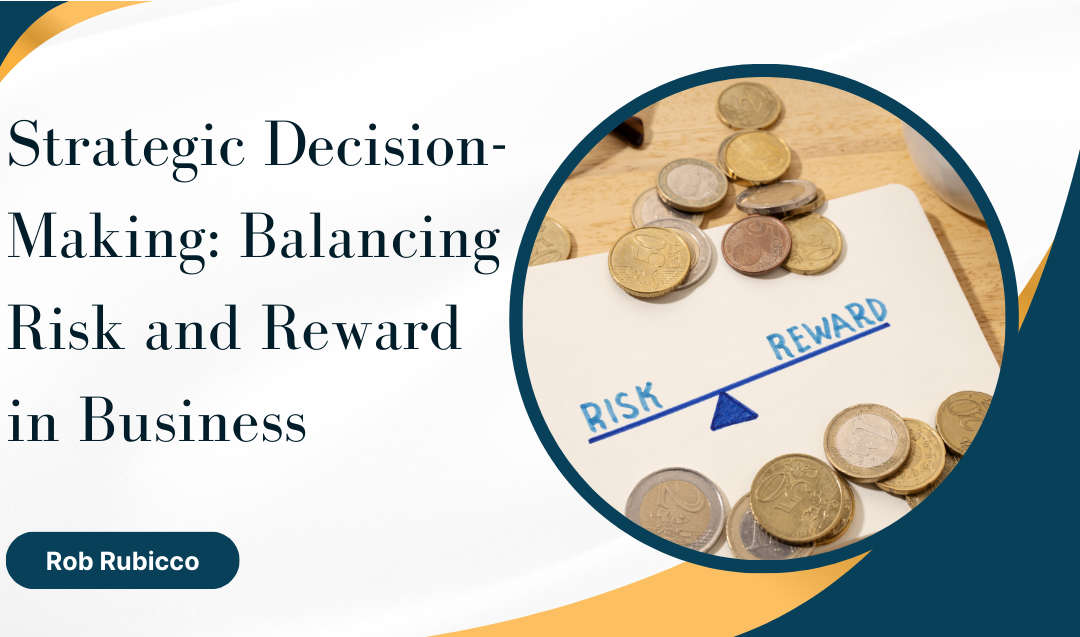Running a business is a continuous series of decisions—some small and routine, others large and defining. At the core of effective entrepreneurship lies strategic decision-making, the art of choosing the best course of action among various options while carefully weighing the risks and potential rewards. For small business owners especially, every decision carries weight. Resources are limited, competition is fierce, and there’s little room for costly missteps.
Strategic decisions often involve entering a new market, launching a product, investing in technology, hiring key personnel, or pivoting the business model. These are not choices to be made lightly. What separates successful entrepreneurs from the rest is their ability to navigate uncertainty with clarity, confidence, and calculated judgment.
Risk is inherent in every decision. It can take many forms—financial loss, damaged reputation, wasted time, or missed opportunities. However, risk isn’t always a negative force. In fact, taking risks is essential to innovation and growth. The key lies in assessing which risks are worth taking and how to mitigate potential downsides.
The first step in balancing risk and reward is gathering accurate and relevant information. Data-driven decisions are often more sound than those made on gut feeling alone. This means doing your homework—conducting market research, analyzing trends, consulting experts, and reviewing financial projections. The more informed you are, the more confidently you can anticipate outcomes and prepare for potential setbacks.
However, too much analysis can also lead to paralysis. Many entrepreneurs fall into the trap of overthinking, waiting for the “perfect” conditions that may never come. Strategic decision-making requires striking a balance between due diligence and action. There’s a time to plan, and there’s a time to leap.
Understanding your risk tolerance is also critical. Every business owner has a different threshold for risk, influenced by their experience, industry, resources, and even personality. A tech startup founder might be more comfortable betting on emerging technologies, while a family-run bakery may prefer safer, more gradual growth. Knowing your comfort zone—and pushing just beyond it—is where real progress happens.
One helpful approach is scenario planning. Consider best-case, worst-case, and most-likely outcomes for each decision. What will you do if things go better than expected? What if they go wrong? How will you adapt or recover? Visualizing these possibilities allows you to plan contingencies and reduces fear of the unknown. It also helps in setting realistic expectations and communicating with stakeholders or team members.
Another powerful strategy is taking calculated, incremental steps rather than going all in from the start. For instance, instead of investing heavily in a new product line, test it with a soft launch. Gather feedback, measure results, and adjust accordingly. This method of small, strategic experiments helps minimize losses while maximizing learning—a concept often referred to as “failing forward.”
Trust also plays a role in strategic decision-making. Surrounding yourself with a trusted team or advisory board can offer diverse perspectives and insights you may not have considered. Sometimes, bouncing ideas off others helps clarify the picture or reveal blind spots. The most effective leaders know when to listen, when to delegate, and when to make the final call with conviction.
Timing, too, can determine the outcome of a decision. Even a good idea implemented at the wrong time can result in failure. Recognizing market cycles, customer behavior, and economic trends can provide the context needed to make timely choices. Strategic decision-making is often about acting when the window of opportunity opens—not too early, not too late.
Ultimately, balancing risk and reward isn’t about avoiding failure. It’s about making informed choices, embracing uncertainty, and having the agility to adjust course when necessary. Every successful entrepreneur has faced failure at some point—it’s how they responded that made the difference. Resilience, adaptability, and a willingness to learn from mistakes are crucial traits for anyone navigating the unpredictable terrain of business.
In small business, the margin for error may be narrow, but the potential for reward is great. Strategic decision-making gives business owners the tools to move forward with clarity and courage. It empowers them to seize opportunities, manage challenges, and grow with intention. When risk and reward are thoughtfully balanced, a business isn’t just surviving—it’s thriving.

